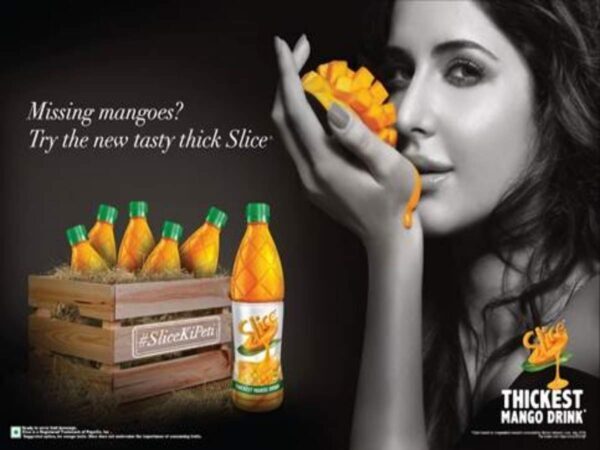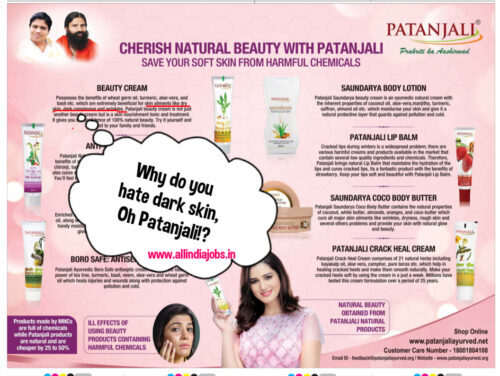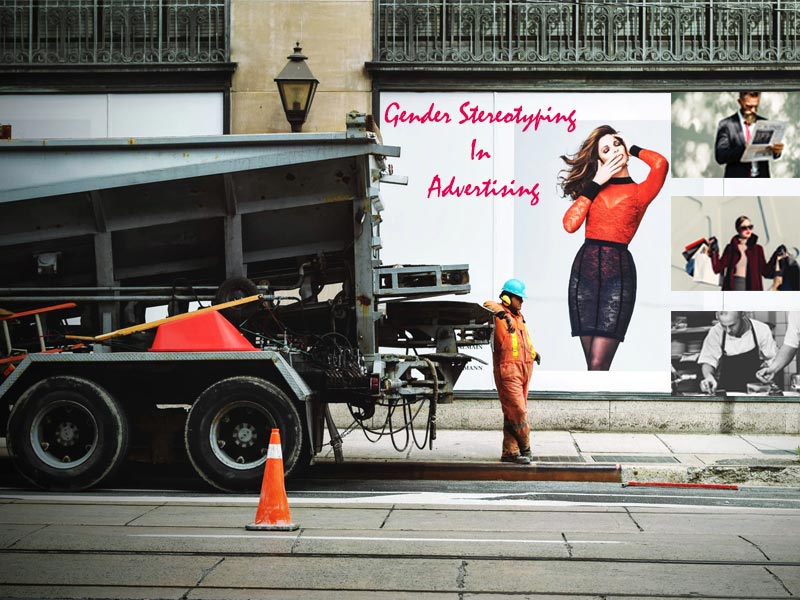Gender Stereotyping in advertising 1: The Cranky Woman
Gender Stereotyping In Advertising of Snickers – the chocolate bar ad that was released a while back portrayed a man turning into a complaining and fussy woman just because he is hungry. As soon as he has Snickers which is supposed to fill his stomach, he goes back to normal.
Later they could only convincingly replace the woman with a spartan warrior, a jungle animal, and the likes. It was easy for the ad-makers to portray cranky people through women because they believed those behaviors match women. That is stereotyping.

Might you think this is funny or a one-off ad? Next time check out any ad that portrayed a cranky character. There are 90% chances to be of a wealthy spoiled woman or a fat mother-in-law.
Gender Stereotyping in advertising 2 : The Seductress Seller
Gender Stereotyping In Advertising Britannia Pure Magic biscuits – It claims that Dark is Desire and thus, shows a woman in a sexy avatar in an ad that logically has no connection with the consumption of cream biscuits. Similarly, a very seductive Katrina Kaif persuades the audiences to have Choc On chocolate bars or Mango Slice Aamsutra.

If you think what I’m thinking, it is clear that they are not just stereotyping women in these ads. They are also stereotyping us- the viewers. They wrongly believe that that is what is needed for them to sell their product to us.
They thought a seductive Katrina Kaif would make me desire a mango juice!? That through seduction, they can sell me anything from a piece of dark chocolate to a cream biscuit! My moral values feel seriously violated.
The objectification of women in the media is a recurrent problem that has no definite end. As women help increase the attractiveness and retention of ads, ad makers use women as objects to achieve their goals. Women’s bodies are exhibited indecently to make the commercials more exciting, whether selling chocolate bars, flooring tiles, bathroom fittings, breakfast cereal, or sports apparel and equipment.
I will only end this with one argument: The suggestive, seductive-eyed theme has nothing to do with the product they are selling. It’s gender stereotyping in advertising! Amen.
Gender Stereotyping in advertising 3: Women struck by a Sudden, Uncontrollable Desire –alias- The Falling Lady
Women falling all over themselves, desiring the object the ad maker needs to sell, has become a formula for lazy ad-makers. Gender Stereotyping in advertising of Axe deodorant ads has been notorious for highly objectifying women. Following their lead, most perfume and deodorant ads today have females swooning over the man when he uses the product that is being advertised.
If I told you that they mean to ride on the popular idea that all men are desperate for female adoration of a sensual, suggestive kind, would you agree?
Yes?
NO??
You might say: It is just an Ad. It is not a comment on society or who men are in general or what they wish for. Right? I agree with you. Except, I don’t. Hear me out:
Take these Ads. Switch the male and female roles. A woman in a black tank-top or saree is spraying herself all over with a deodorant. And suddenly, a dozen barely clad men are falling all over her seductively.
You never see these ads because they don’t sell. Why? Because they don’t appeal to the popular notions of what a gender must or must not do, have or feel.
Now, that my friend is the textbook definition of Gender Stereotyping.
This Ad, as you might imagine, is objectifying men more than it is objectifying women. Think about it.
Gender Stereotyping in advertising 4: Look Lovely to Live Happily
Gender Stereotyping In Advertising of Soap ads reinforce the idea that a woman can look fresh, pretty, and young no matter at what age. And if she is not, “her career is going to go down the drain, she is never going to get married.”
Why? “Because she is not using the right products.”

Products like Fair and Lovely or Olay creams drive in the idea that only fair is beautiful, and even though aging is natural, we must hide it. Cereals like Kellogg’s or Dabur Honey insist that being slim is a sign of looking good, and you can achieve only by consuming the above products.
Creams and razors like Gillette Venus popularize the idea that a woman’s limbs must always be smooth and silky, allowing her to wear short clothes that she otherwise will not be able to. Nivea and Dove mainly have men falling for women’s smooth skins and constantly wanting to touch them.
Some more Gender Stereotyping Ad campaigns
A particular McDonald’s ad shows two kids discussing whether they are girlfriend and boyfriend. The boy says that he doesn’t wish for a girlfriend as she is very demanding and keeps asking for things. When his female friend says that all she wants is a McDonald’s burger, he is suddenly happy because his pocket money is enough to afford it. McDonald wished to portray that they serve meals that are easy on the pocket, but in the process, they established the idea that women are demanding and it isn’t easy to please them, especially when you do not have enough money.
A Jabong ad shows a hold-up in a bank where robbers ask everybody to be quiet and lay on the floor. As they do this, women notice one another’s shoes and can’t stop discussing them. Though the ad may be considered funny and light-hearted, one is surprised to see how even in a difficult situation such as a bank robbery, it is shown that all women can think about is shopping.
Gender stereotyping is common in Bank ads for loans where home loans and education loans are generally shown to be needed for boys while a loan taken for a girl is mostly for her wedding, as though that is the only significant event of her life.
Imperial Blue ads proudly flaunt the idea-Men will be Men. The entire series of these ads play on the typical stereotypes against men. Ads generalize or instead standardize ideas of beauty, attractiveness, and role models and persuade society to consume goods to conform to these ideas.
Few Philosophical Rants about Gender Stereotyping in Ads
Traditionally, society has attributed specific tasks and behaviors to both genders. Common examples of gender stereotyping- Men are always supposed to be solid and macho; they must work outside the house, earn and support their families.
Men are never depicted as being soft or very emotional. They must always be strong, fit, and good-looking, be able to take responsibility, look after their parents, women, and children. They are supposed to be wise consumers and expert decision-makers.
On the other hand, women must always look good, be presentable, not loud, be good at housekeeping and raising children; they are not capable of hard physical labor, etc. On the other hand, ads also portray women as a “seductress” who lures men, manipulates them, is a gold-digger, very attractive, wears revealing clothing, etc.
Also, a woman is considered an unintelligent consumer who depends on her man for decision-making and finances.
Men are part of ads for products and services like bank loans and automobiles. At the same time, women are always portrayed in ads displaying household or kitchen appliances, baby care products, or even perfumes and cosmetics for both sexes.
One of the most severe problems of this standardization is that both sexes, especially women, have internalized the specified roles to such an extent that they consider it natural. This kind of gender stereotyping has a profound impact on the psychology and image of the self. Thus, when women cannot fulfill their responsibilities as prescribed by society and reinforced by the media, they believe they have failed.
Ads of products such as water purifiers, toothpaste, cooking oil, detergents, diapers, etc., rarely depict men, as if showing to the society that cleaning, cooking, and worrying about the health of the family is only a woman’s job. Baby product ads always portray a woman with the baby as though men are incapable or unwilling to care for their child. Though women are always shown to be cooking at home, restaurant ads depict only male chefs.
Although Indian media is ridden with sexist, stereotypical ads, awareness has set in somewhere. New, intelligent, positive advertising is created, which also gives a social message. Sex roles in society seem to be changing, albeit at a languid pace. Nevertheless, advertising has risen to a new level where we witness gender-equal ads or even some that break conventional stereotypes.
Fair and lovely has faced backlash for so long that they have now changed their brand name from ‘Fair & Lovely’ to ‘Glow & Lovely’. These days depict women as being less dependent on men, economically stable, pursuing careers- a more realistic depiction of the world we live in. Certain ads also attempt to break preconceived notions about physical beauty and argue that it is more important to be fit and healthy rather than slim and fair.
The change has begun, but we have a long way to go. We must understand that large-scale awareness about gender roles, equality, and media literacy are the only tools. We must equip people with these tools if they are to create responsible advertising.
Do you have an interesting incident or experience to share with the world? Write to us, and together we can discuss how to weave your story and present it to the world. Would you mind sending us your story?.












Comments are closed.